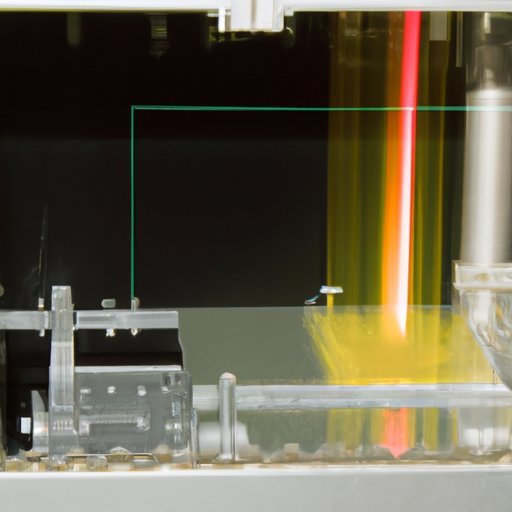Introduction
Cathode Ray Tubes (CRTs) were the primary display technology for televisions and computer monitors for several decades. Understanding how these devices functioned was crucial to generating and displaying images on their screens. While CRTs have largely been replaced by newer technologies, they remain important for understanding the fundamentals of display technology.
An Overview of an Old Technology: How CRTs Work
Cathode Ray Tubes have been in use since the early 1900s. They were used for oscilloscopes, scientific instruments that display electrical signals. CRTs were also used in early televisions and computer monitors. They are vacuum tubes that use an electron gun to produce a beam of electrons that hit a phosphorescent screen to produce an image.
From Cathode to Screen: Exploring the Inner Workings of a CRT
The CRT consists of a cathode, an anode, and an electron gun. The cathode is a filament that emits electrons when heated. The anode is a positively charged electrode that draws electrons towards it. The electron gun is an assembly that accelerates electrons and directs them towards the screen.
Behind the Scenes: How Electrons are Manipulated to Create the Image on a CRT
The electron beam is used to create an image by scanning across the screen from left to right, top to bottom. The beam can be deflected using a magnetic or electric field to direct it towards specific points on the screen. The phosphors on the screen light up where the beam hits them, creating an image.
Decoding Cathode Ray Tubes: A Guide to Understanding the Fundamental Science Behind CRT Technology
Understanding CRTs requires knowledge of physics concepts such as electromagnetism, electron behavior, and electromagnetic waves. When an electric field is applied to a wire, electrons will flow through the wire, creating a current. Electromagnetic waves can be created by oscillating electric and magnetic fields in space. CRTs create images by manipulating the movement of electrons with magnetic and electric fields.

An Inside Look at the Technology Behind CRTs and How it Paved The Way for Modern Displays
CRTs were the dominant display technology until the late 1990s. They had several advantages, including high contrast ratios, good color accuracy, and fast response times. However, they were also bulky, heavy, and required a large amount of power. With the advent of LCD and OLED displays, CRTs fell out of favor. However, CRTs paved the way for modern display technologies by introducing concepts such as electron guns and electron-beam scanning.
Retro Technology Revisited: Exploring the Technical Details of Cathode Ray Tubes
To achieve the best possible image quality, CRTs required precise calibration of the electron gun and screen. Different types of CRTs were available, such as shadow mask and aperture grille CRTs, each with advantages and disadvantages. Shadow mask CRTs suffered from color bleeding, while aperture grille CRTs were more expensive to produce. Understanding these differences allowed consumers to make informed decisions when purchasing televisions and computer monitors.
Conclusion
CRTs were once ubiquitous in homes and offices around the world. Understanding how these devices functioned allows for a deeper appreciation of the technological advancements that brought us to modern displays. While CRTs are no longer in use, their influence can still be felt in modern technology. As new technologies continue to emerge, it is important to remember the lessons of our technological past.
(Note: Is this article not meeting your expectations? Do you have knowledge or insights to share? Unlock new opportunities and expand your reach by joining our authors team. Click Registration to join us and share your expertise with our readers.)
